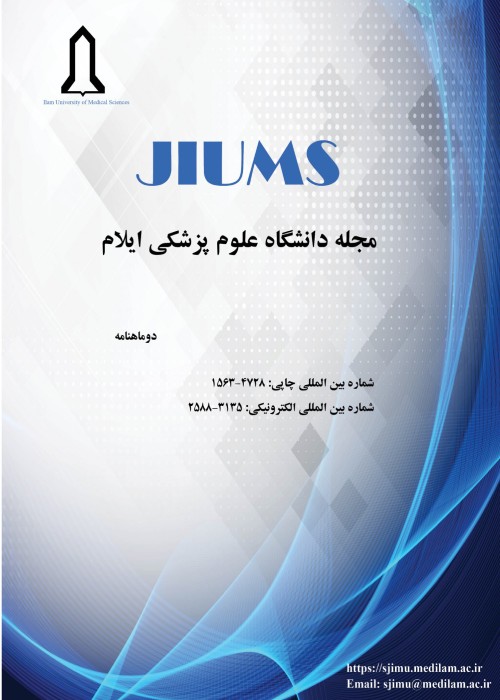Investigating the relation of attachment and identity styles with borderline personality Disorder of adolescents
Abstract:
Background
Borderline personalities are characterized as inconstant pervasive patterns in the interpersonal relations and self-image and the mode of impulsivity that establish at the early adulthood and rise up in different circumstances and occasions. The research was accomplished to attachment and identity styles in prediction borderline personality Disorder in student.Materials And Methods
statistical sample of this study includes 200 students of East Azerbaijan in 2010-2011 academic years that have been selected by cluster sampling and in several phases. Claridge and Broks borderline personality questionnaire, Collins and Reed adult attachment questionnaire, and Berzonsky identity style test have been used for data collection. The data was analyzed by pearson correlation coefficient and multiple regression analysis. Results
The findings show that borderline personality Disorder has negative correlation with normative identity style(r=-/234) and commitment identity style(r=-/302)and has positive and meaningful correlation with confusion identity style(r=/197), insecure attachment style(r=/257) and avoidant insecure attachment (r=303)(p<0/05).There is positive and meaningful relation between informational identity style, normative identity style (r=505) and commitment identity style (r=406)(p<0/05). Normative identity style has positive relation with commitment style(r=440) and negative and meaningful relation with insecure attachment style (r=-/164) (p<0/05). Confusion identity style has negative relation with commitment identity style (r=-/330) and positive and meaningful relation with insecure attachment style (r=223) and avoidant insecure attachment style(r=214) (p<0/05).And also the relation between commitment identity style and avoidant insecure attachment style is negative and meaningful and It is in the level of five hundredths. There is positive and meaningful relation between insecure attachment style and avoidant insecure attachment style(r=246). The results of multi-variable correlation coefficient with input method showed that commitment identity, normative identity, confusion identity style, insecure attachment and avoidant insecure attachment style are the strongest variables for predicting borderline personality disorder in students. Conclusion
According to the findings of this study borderline personality disorder is maladaptive and enduring pattern of inner experience and external behavior that goes back to youth and adolescents that has direct relation with insecure attachment style and avoidant insecure attachment style and also confusion identity style.Keywords:
Language:
Persian
Published:
Ilam University of Medical Science, Volume:21 Issue: 6, 2013
Pages:
23 to 32
magiran.com/p1211575
دانلود و مطالعه متن این مقاله با یکی از روشهای زیر امکان پذیر است:
اشتراک شخصی
با عضویت و پرداخت آنلاین حق اشتراک یکساله به مبلغ 1,390,000ريال میتوانید 70 عنوان مطلب دانلود کنید!
اشتراک سازمانی
به کتابخانه دانشگاه یا محل کار خود پیشنهاد کنید تا اشتراک سازمانی این پایگاه را برای دسترسی نامحدود همه کاربران به متن مطالب تهیه نمایند!
توجه!
- حق عضویت دریافتی صرف حمایت از نشریات عضو و نگهداری، تکمیل و توسعه مگیران میشود.
- پرداخت حق اشتراک و دانلود مقالات اجازه بازنشر آن در سایر رسانههای چاپی و دیجیتال را به کاربر نمیدهد.
In order to view content subscription is required
Personal subscription
Subscribe magiran.com for 70 € euros via PayPal and download 70 articles during a year.
Organization subscription
Please contact us to subscribe your university or library for unlimited access!


